Jul
21
2014
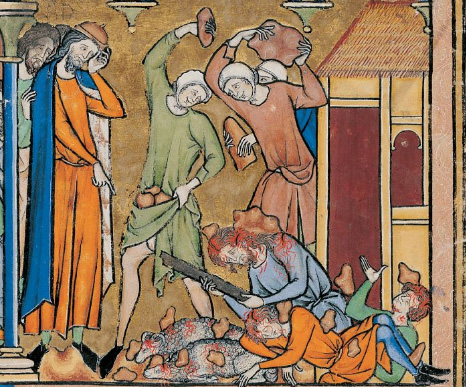
For seizing the devoted plunder of Jericho, Achan was stoned to death and burned with fire, along with his children, livestock, and all his possessions. This judgment appears to contradict Deuteronomy 24:16, which forbids the punishment of children for the sins of their fathers.
It seems that the solution is architectural. Here’s an excerpt from the forthcoming Sweet Counsel:
Continue reading
Comments Off | tags: Achan, Covenant curse, Covenant Theology, Joshua, Tabernacle, Ten Commandments | posted in Bible Matrix, Biblical Theology
Jul
18
2014
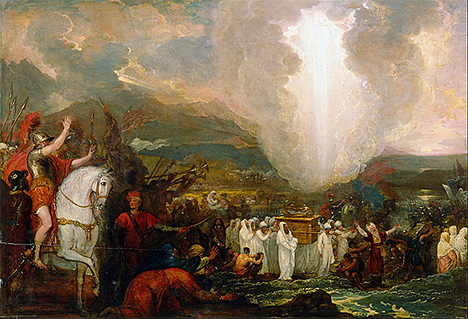
At that time the Lord said to Joshua,
“Make flint knives and circumcise
the sons of Israel a second time.”
(Joshua 5:2)
Was Israel disobedient in its failure to circumcise every male born in the wilderness? The Lord never chastised them for this. If this lapse in the practice of circumcision was in the plan of God, what was the purpose of that plan? The example which first comes to mind is the circumcision of the firstborn son of Moses in Exodus 4:24-26.
This post has been slain and resurrected for inclusion in my 2015 book of essays, Inquietude.
Continue reading
Comments Off | tags: Circumcision, Covenant Theology, Egypt, Exodus, Firstfruits, James B. Jordan, Jericho, Moses, Revelation, Sodom | posted in Bible Matrix, Biblical Theology, The Last Days, The Restoration Era
Jul
13
2014

Getting towards the end of a book on biblical architecture, I am thinking that perhaps the answer to Peter Leithart’s very good question concerning the “missing heart” in Leviticus might be found in the layout of the Tabernacle. He writes:
Continue reading
Comments Off | tags: Leviticus, Peter Leithart | posted in Bible Matrix, Biblical Theology
Jul
8
2014
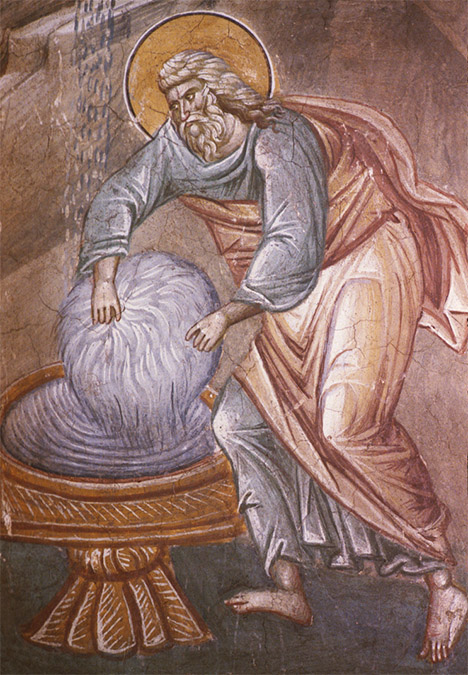
In the Bible, everything is confirmed by the testimony of two or three witnesses. (James Jordan notes that this is the basis for Hebrew parallelism and also verbal pleonasm. See Symbolism – A Manifesto.) An example of a “dual” witness from God would include the two dreams given to Joseph, and the two dreams given to Pharaoh. We see each Covenant confirmed by two witnesses as well. The Mosaic Covenant was a double witness at three levels: the two tablets of the Law, the second set of tablets, then a second giving of the Law in Deuteronomy.
A sign was given to Gideon to prove that God would save Israel by Gideon’s hand. He requested a second sign, and rather than chiding him, the Lord acquiesced. The Lord Himself asks us to prove all things. That explains the double sign, but not the ingredients of the signs, the fleece and the threshing floor. Fortunately, the consistency of biblical symbolism and structure not only gives us the answer, it reveals the events as a type of the events which followed, and, typologically, also shines light on the process of the first century apostolic witness.
Continue reading
2 comments | tags: Firstfruits, Gideon, Judges, Literary Structure, Pentecost, Typology | posted in Bible Matrix, Biblical Theology
Jun
28
2014
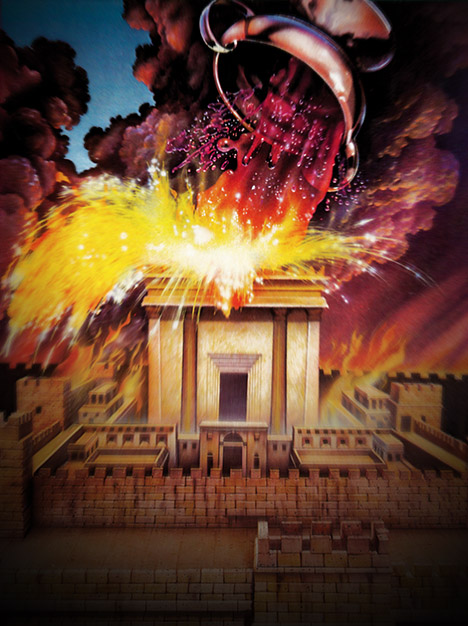
or Where Kenneth Gentry Is Wrong on the Revelation
Part 1 here.
I’ve been meaning to write this post since I wrote Part 1 (over two years ago). A friend’s recent question concerning Kenneth Gentry’s lectures on the Revelation encouraged me to bite the bullet and bust a gut and get it done. The question is this: Is the Revelation to be interpreted in the light of Josephus’ Jewish War, or in the light of the Bible itself?
Continue reading
6 comments | tags: AD70, Ark of the Covenant, Covenant curse, Covenant Theology, Deuteronomy, James B. Jordan, Kenneth Gentry, Leviticus, Literary Structure, Peter Leithart, Revelation, Revelation 20, Thessalonians | posted in Against Hyperpreterism, Bible Matrix, Biblical Theology, The Last Days
Jun
25
2014
Comments Off | tags: AD70, Herod | posted in Bible Matrix, Biblical Theology, The Last Days
Jun
12
2014

‘Stories are equipment for living.’ – Kenneth Burke
Blog gurus tell you never to blog “off brand,” but this one’s not as off as it might appear.
If you love the Bible and haven’t read Robert Alter’s The Art of Biblical Narrative, you really need to. One of the reasons for the Reading the Bible in 3D seminar in April was to help people understand that the tools they gain from watching quality movies and TV and reading good fiction should not be shelved when reading the Bible. Sadly, it seems most Christians really aren’t interested in understanding the Bible in a new way. They are taught by ministers who have little idea of what they are actually dealing with in the Bible, and the ministers were trained in Bible academies ruled by men without an ounce of the childlike imagination the Bible requires to be understood. Consequently they miss the beauty, the musical rhythm, the intricacies and the constant use of “plant and payoff”, all of which are understood by the best authors. This includes screen writers, who have to say everything the writer of a novel says but in less words. Robert McKee writes:
Continue reading
5 comments | tags: Culture, Film, Robert Alter | posted in Bible Matrix, Biblical Theology
Jun
1
2014

The final vision of Ezekiel is one of the most hotly debated passages in the Bible. Since the structure described has never been built, those who take the passage as fulfilled in history believe it to be figurative. However, the building is described in such careful detail that common sense suggests that something else is going on. The precise measurements remind us of the instructions given concerning the Tabernacle and Solomon’s Temple for the purpose of physical construction. Is Ezekiel’s temple a false prophecy, or does it describe a third, and as yet unbuilt, Temple in Jerusalem?
Continue reading
3 comments | tags: AD70, Daniel, Esther, oikoumene | posted in Bible Matrix, Biblical Theology, The Restoration Era
May
4
2014

or The Time Appointed by the Father
The Bible is a musical book. It plays the same tune over and over again. However, much of modern Bible scholarship refuses to be caught up in the flow, instead limiting its practice to the particulars. Instead of recognising themes and motifs, it boils down to ”Look, there’s another B flat.” The historical-grammatical method is an instrument which refuses to submit to the music for fear it might get carried away.
Peter Leithart follows the tune concerning the meaning of stoicheia. He has not only identified a B flat, but how it is used in the literary composition – its significance in the Covenant tune as it is presented to us by God, and as it plays out in history. I’ll quote his post, and then I will allow the same tune to carry him somewhere he does not want to go.
Continue reading
Comments Off | tags: Baptism, Covenant Theology, James Jordan, Peter Leithart | posted in Bible Matrix, Biblical Theology, Quotes
Apr
12
2014
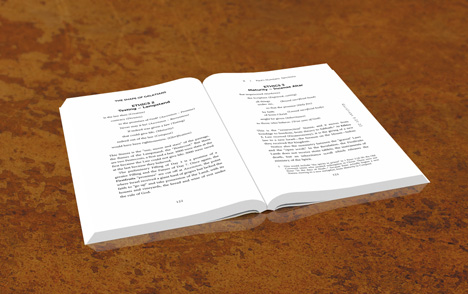
“I found it refreshing that the text didn’t spend chapters discussing controversies because Michael Bull lets the fractal nature of the text itself speak out in matters such as baptism and justification.”
A review of The Shape of Galatians by Victor Chininin Buele (from amazon)
_________________________________
I was very skeptical at first about reading Bible Matrix (an earlier work by the author), and I did so only because a friend insisted that I should. Soon enough, I started to see glimpses of the patterns that the author described. I continued to read through his other works, and it became clear to me that Michael Bull does desire to love God with all his heart, soul, mind, and strength. He does so by seeking to understand the Bible and teach it to others. So, I came across The Shape of Galatians, and I read it during a snow day. I could not put it down.
Continue reading
1 comment | tags: Literary Structure, The Shape of Galatians, Victor Chininin Buele | posted in Bible Matrix, Biblical Theology



































